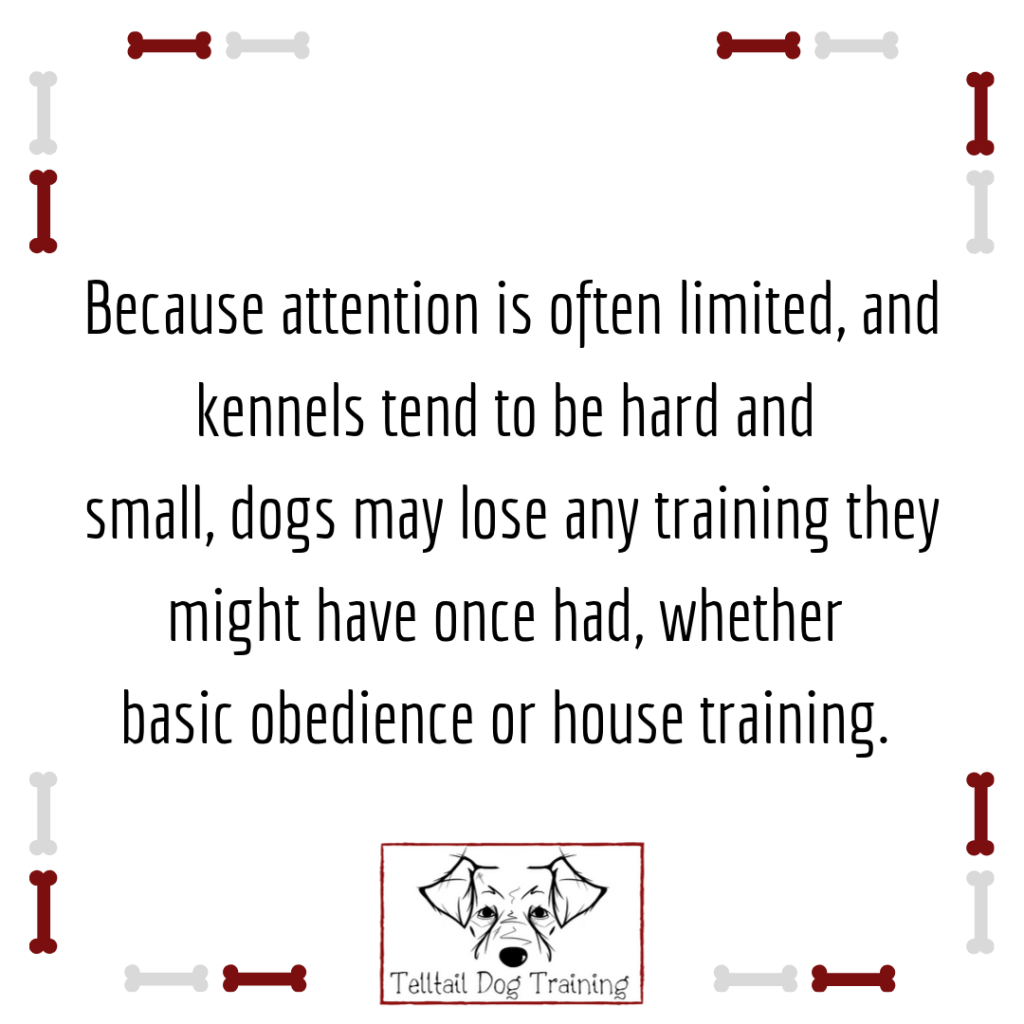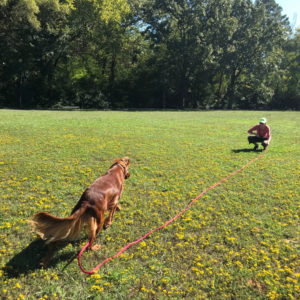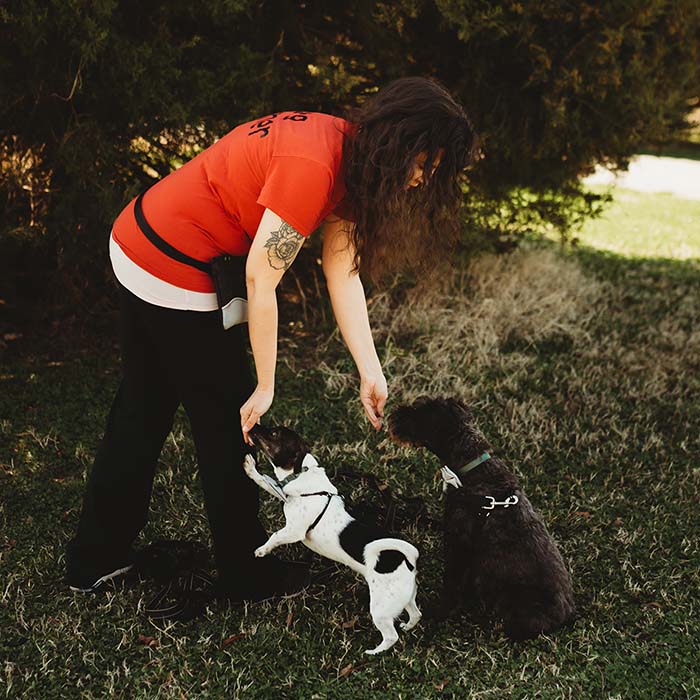Kennel Stress Responses
How prolonged boarding or kenneling can impact a dog
She needed a chance.
I could see that the first time I met her.
It was easy to fall in love with her natural smile, her infectious energy, and her desire to just be close. All the love, all the cuddles, all the time.
Princess was finally adopted on September 11, 2019, after 573 days either at the shelter or in boarding. She’s not the first to wait so long, nor is she one of the ones waiting the longest.
She won’t be the last to wait so long.
I’ve been volunteering with Maumelle Friends of the Animals (MFOA) since I moved to Little Rock, and I first started going to the shelter to train some of the dogs. That’s when I met Jean, the little Shar-Pei mix, and Princess, the Boxer mix. They had both caught my attention for their seemingly limitless energy and fearlessness. Neither would shy away from making eye contact or jumping straight for my face to give me kisses. So we worked on sits for pets and additional manners. And when Princess moved to boarding and Jean was adopted, I started taking Princess out for little adventures here and there.

We had walked Two Rivers the day I noticed her tail. We’d finished the trip and grabbed a pup cup, and I was trying to figure out what to do next. I had a few hours left before any other responsibilities, and I didn’t want to bring her right back to boarding. We sat in a gas station parking lot as I thought it over, and she stared at me, settling in nicely while wearing her little purple sweater, and her tail thumped on the seat. Blood and scabs, right there, on the end.
I texted my MFOA point person and asked about her tail.
“It’s a stress response,” she answered. “She’s been chewing on it.”
Of course.
Common results of prolonged kenneling:
- Stress responses. These can include chewing on limbs or tails, like Princess was prone to doing. Once a medical problem has been eliminated, as dogs can chew to try to alleviate pain or itchiness, other sources of the issues should be considered. It can be the result of the stress of the kennel or boredom. A dog that has hot spots, mange, or other physical issues often blossoms into a beautiful dog once he is adopted. (This post by WebMD Pets covers additional information.)
- Skill deterioration. Because attention is often limited, and kennels tend to be hard and small, dogs may lose any training they might have once had, whether basic obedience or house training. Being consistent, kind, and clear once a rescue comes home often helps reestablish a lot of the skills they might have lost during their time in boarding or at the shelter. They also might shut down completely, not showcasing any parts of their personality, or they may become kennel aggressive, charging and barking at other dogs in kennels, while not actually being an aggressive dog.
- Socialization difficulties. Princess did have some doggy friends once, but with the limited exposure and stress of her surroundings, some of these skills were lost and she became dog selective. This does not mean she is an aggressive dog, or that she can never have dog friends again, just simply that she needed some time to decompress and have slow, proper introductions.
- Inability to settle. Certain environments, like a shelter or even doggy daycares with a no kenneling policy, never provide an opportunity for a dog to calm down. They’re in a constant state of arousal and overstimulation, which can lead to certain behaviors they wouldn’t otherwise exhibit, like guarding their bed or space in an attempt to be left alone. They may also lose their hearing, as these sorts of environments are constantly loud. (This article covers some tips on how to teach a shelter dog to settle.)

And sometimes their stomachs just can’t handle much, as I also learned that day. Due to the amount of stress and the constant food changes, since the dogs get what’s available, stomach issues can develop.
We got some hamburgers before heading back to boarding, and I’d been treating her quite a bit throughout the day as we practiced basic obedience on our walk. I later learned that all my attempts to give her a good day had resulted in an accident in her kennel.
I adjusted. Less food the next time. No hamburgers.
But without building that relationship with her, I wouldn’t have gotten to know her as well as I did. My trips out and about with Princess helped me see her personality. I saw her bleeding tail from the stress response. I saw her interact with other people. I saw her connect with me.

Spending time with a dog is what builds that relationship. I could have not given any food to Princess at all during our outings and still connected with her just as deeply.
Because I was also paying attention.
I saw that she seemed to prefer brown-haired women the best. She wanted to go running with anyone jogging by. She was curious about the swan we passed but did not try to interact with it. She was wonderful in the drive-through when we stopped for Starbucks, and she would always say hello to the barista, her tail wagging.
What you see staring a dog down in a kennel is most likely not what you will see when you take the dog out of the environment. There will always be a transition period, of course (see my previous article on Maslow, who came from a foster), but there’s more going on than what’s possible to take in all at once.
And now, Princess is home.
–
Next week: What to do if you DO NOT want the dog! I found myself taking care of a Malinois/German Shepherd mix recently. She’s been featured on the Telltail Dog Instagram. She’s not my dog, not even a client’s dog, but suddenly she was my responsibility–responsibility I didn’t want. I’ll share what I did and how I changed my mind about her.
Drop-in group classes take place every Saturday at SoMa Animal Clinic. I also offer private in-home lessons. Email me at info@telltaildogtraining.com for more information.



